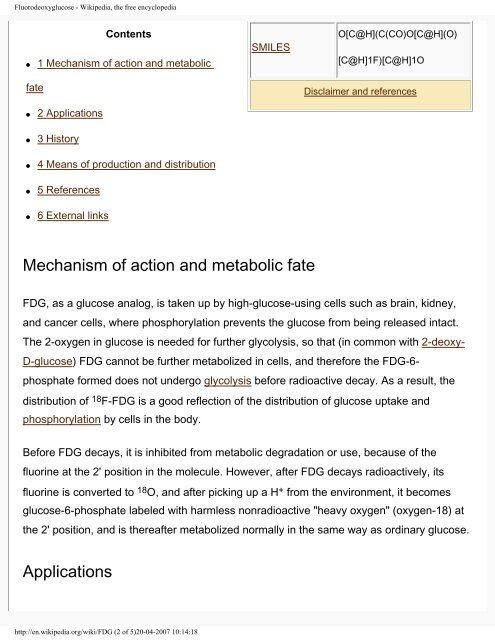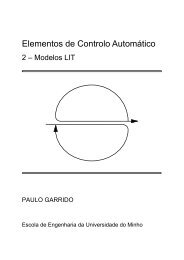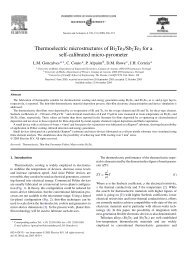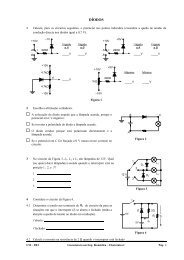Fluorodeoxyglucose - Wikipedia, the free encyclopedia
Fluorodeoxyglucose - Wikipedia, the free encyclopedia
Fluorodeoxyglucose - Wikipedia, the free encyclopedia
You also want an ePaper? Increase the reach of your titles
YUMPU automatically turns print PDFs into web optimized ePapers that Google loves.
<strong>Fluorodeoxyglucose</strong> - <strong>Wikipedia</strong>, <strong>the</strong> <strong>free</strong> <strong>encyclopedia</strong><br />
●<br />
fate<br />
Contents<br />
1 Mechanism of action and metabolic<br />
SMILES<br />
O[C@H](C(CO)O[C@H](O)<br />
[C@H]1F)[C@H]1O<br />
Disclaimer and references<br />
●<br />
2 Applications<br />
●<br />
3 History<br />
●<br />
4 Means of production and distribution<br />
●<br />
5 References<br />
●<br />
6 External links<br />
Mechanism of action and metabolic fate<br />
FDG, as a glucose analog, is taken up by high-glucose-using cells such as brain, kidney,<br />
and cancer cells, where phosphorylation prevents <strong>the</strong> glucose from being released intact.<br />
The 2-oxygen in glucose is needed for fur<strong>the</strong>r glycolysis, so that (in common with 2-deoxy-<br />
D-glucose) FDG cannot be fur<strong>the</strong>r metabolized in cells, and <strong>the</strong>refore <strong>the</strong> FDG-6-<br />
phosphate formed does not undergo glycolysis before radioactive decay. As a result, <strong>the</strong><br />
distribution of 18 F-FDG is a good reflection of <strong>the</strong> distribution of glucose uptake and<br />
phosphorylation by cells in <strong>the</strong> body.<br />
Before FDG decays, it is inhibited from metabolic degradation or use, because of <strong>the</strong><br />
fluorine at <strong>the</strong> 2' position in <strong>the</strong> molecule. However, after FDG decays radioactively, its<br />
fluorine is converted to 18 O, and after picking up a H + from <strong>the</strong> environment, it becomes<br />
glucose-6-phosphate labeled with harmless nonradioactive "heavy oxygen" (oxygen-18) at<br />
<strong>the</strong> 2' position, and is <strong>the</strong>reafter metabolized normally in <strong>the</strong> same way as ordinary glucose.<br />
Applications<br />
http://en.wikipedia.org/wiki/FDG (2 of 5)20-04-2007 10:14:18








